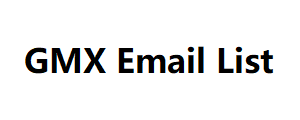you’re looking for If you want to identify low-
KD keywords in bulk, you can also use Keywords Explorer. Here’s how you do it: Enter a broad topic into Keywords Explorer’s search bar Head to the Matching terms report Select Phrase match on the toggle Filter for keywords with a Keyword Difficulty score under 20 Matching terms report results with filters applied, via Ahrefs’ Keywords Explorer If the suggestions aren’t that relevant, use an “Include” filter to narrow things down. For example, let’s filter our list to include only keywords with the word “best.”
Matching terms report results with filters applied
via Ahrefs’ Keywords Explorer You can then check the SERP to assess difficulty and competitiveness further. Use your target keyword in three places A target keyword is the main keyword that describes the focus or topic of your page. You should use this keyword in three places: A. Title tag Google says to write title tags that accurately describe the page’s content. If you’re targeting a specific keyword or phrase, this should do precisely that. It also demonstrates to searchers that your page offers what they want, as it aligns with their query. Is this a hugely important ranking factor? Probably not, but it’s still
worth including. That’s why we do it with almost all
our blog posts: Target keyword in title of an Ahrefs post, via Google Just don’t shoehorn the keyword in if it doesn’t make sense. Readability always comes first. For example, if your target keyword is “kitchen cabinets cheap,” that doesn’t make sense as a title tag. Don’t be afraid to rearrange things or add in stop words so it makes sense—Google is smart enough to understand what you mean. Example of a title tag, via google.com B. Heading (H1) Every page should be wrapped in an H1 tag and include your target keyword where it makes sense. Example of an H1 heading, via Ahrefs Blog C. URL Google says to use words in URLs relevant to your page’s content. Unless the keyword you’re targeting is unusually long,
using that as the slug is the best way
to do this. Target keyword in slug, via Cell Phone Number List Gansu Google 6. Use a short and descriptive URL URLs in SEO play a crucial role in informing users and search engines about the content and structure of a webpage. Google says to avoid using long URLs because they may intimidate searchers. Therefore, using the exact target query as the URL isn’t always best practice. Just imagine your target keyword is “how to get rid of a tooth abscess without going to the dentist.” Not only is that a mouthful (no pun intended), but it’s also going to get truncated in the search results: Truncated keywords example, via google.com Removing stop words and unnecessary details will give you something shorter and sweeter while keeping the important words. Removing unnecessary stop words, via google.com That said, don’t be afraid to describe your
page more succinctly where needed. Descriptive
URL example, via google.com Note that if your CMS already has a predefined, ugly URL structure, it’s not a huge deal. And it’s certainly not worth jumping through countless hoops to fix. Google is showing the full URL for fewer and fewer results these days anyway. 7. traffic Image optimization for SEO is the process of ensuring your images are optimized for search. It’s important to optimize images because they can show in Google Images and drive additional search traffic to your site. Don’t overlook the importance of Google Images. It’s sent us over 5.5K clicks in the
past three months: Total clicks for Ahrefs
‘ images, via GSC Optimizing file names London is home to a high concentration of is simple. Just describe your image in words and separate those words with hyphens. Here’s an example: Joshua Hardwick’s photograph, via ahrefs.com Filename: number-one-handsome-man.jpg For alt tags, do the same—but use spaces, not hyphens. <img src=”…/number-one-handsome-man.jpg” alt=”the world’s most handsome man”> Alt text isn’t only important for Google but also for visitors. If an image fails to load, the browser shows the alt tag to explain what the image should have been: Alt tag replacing image that failed to load Plus, around 8.1M Americans have vision impairments and may use a screen




